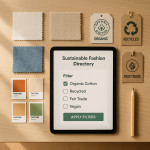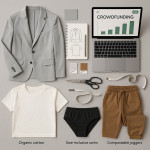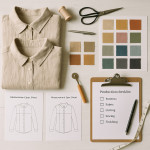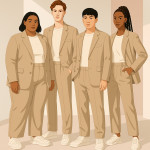Qualifying freelance clothing designers: cost, timelines and style fit criteria
Hiring freelance clothing designers unlocks flexibility, fresh ideas and speed. Yet choosing the right talent requires clear cost benchmarks, timeline checkpoints and a robust style-fit process. This guide walks you through every step so you pay fair fees, keep projects on schedule and land a designer who elevates your brand DNA.
Why brands turn to freelance clothing designers
Independent labels and big retailers alike now rely on freelancers to handle seasonal peaks, niche capsules or quick trend tests. Freelance clothing designers offer:
- Specialist know-how (activewear, evening, adaptive sizing, eco textiles).
- Lean overheads compared with full-time hires.
- Global reach via talent hubs such as online clothing-designer directories.
But the boom has also created a crowded market. Below you'll learn to filter options fast and avoid budget blow-outs.
Cost breakdown: what freelance clothing design really costs in 2024
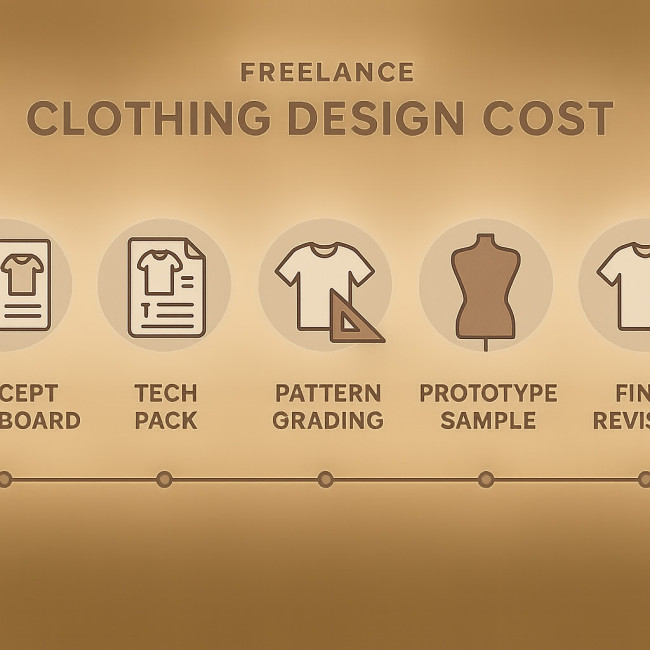
Rates vary by seniority, geography and project scope. Still, most assignments follow five common phases. The table below helps you compare proposals side-by-side. Expect slight premiums in fashion capitals such as New York, London or Paris, and discounts when sourcing digitally from emerging hubs like Bogotá or Ho Chi Minh City. Always confirm whether quoted prices include at least one round of revisions, print-placement layouts, digital pattern exports and couriered fabric swatches, because these seemingly small extras can shift your final invoice by several hundred dollars. Knowing exactly which deliverables are baked into a freelancer's number lets you negotiate confidently and avoid awkward scope disputes later.
| Project phase | Typical deliverables | Average fee (USD) | Usual timeline |
|---|---|---|---|
| Concept & mood board | Inspiration, colour palette, silhouette sketches | $400 – $700 | 1 – 2 weeks |
| Technical pack | Flat drawings, measurements, trims, BOM | $600 – $1 000 | 1 week |
| Pattern & grading | Digital pattern files, graded sizes | $800 – $1 500 | 1 – 3 weeks |
| Prototype sample | First physical garment, fit notes | $1 000 – $2 000 | 2 – 4 weeks |
| Revision & final spec | Updated tech pack, production-ready sample | $300 – $600 | 1 week |
Source : Business of Fashion
Hidden cost triggers to watch
- Rush fees can add 20 % if timelines shrink below industry averages.
- Complex inclusive sizing grading pushes pattern costs higher.
- Eco-certified fabrics often mean extra swatch sourcing hours.
Timeline benchmarks and milestone control
Design delays balloon when milestones lack clear owner-ship. Adopt these guardrails:
- Kick-off brief – include brand values, target price point, and must-hit in-store date.
- Weekly stand-ups – 15-minute calls keep concepts aligned and spot bottlenecks early.
- Mid-project fit review – prevents expensive pattern corrections later.
- Final sign-off – lock specs before sending to the factory.
Need a deeper onboarding framework? See our guide on smooth designer onboarding.
Style-fit: matching a designer to your brand DNA
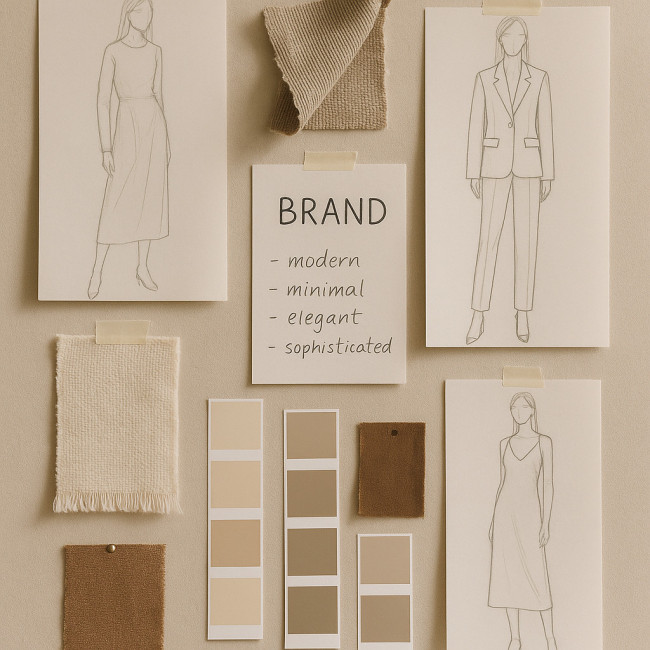
Price and speed matter, but a mismatched aesthetic still kills sell-through. To safeguard sell-through percentages and brand equity, invest the same rigour in aesthetic vetting that you would in a lab-dip approval. Use this three-layer filter to move quickly without compromising creativity: examine visual resonance, validate process compatibility, and probe cultural alignment. By stacking these three checkpoints you establish an evidence-based view of whether a designer can truly translate your DNA rather than merely delivering generic trend adaptations.
1. Portfolio resonance
Shortlist only designers whose past work mirrors your desired cut, colour story or customer age group. Scroll thumbnails fast, then dive into technical packs for detail level.
2. Process compatibility
Ask candidates to outline tool stack (CLO3D, Illustrator, Gerber), communication rhythm and sample vendors. Brands using AI forecasting tools can gain extra synergy by hiring designers versed in AI-driven trend boards.
3. Brand culture alignment
Schedule a 30-minute values interview. Discuss sustainability, size inclusivity and transparency. A designer who shares your mission reduces conflicts later.
Red-flag checklist during vetting
- Portfolios with only runway shots and no tech packs.
- Extremely low quotes (50 % below averages) – often signal inexperience.
- Vague timelines without calendar dates.
- No mention of intellectual-property transfer terms.
Where to source qualified freelancers fast
Beyond referrals, brands now rely on curated directories that let you filter by niche, location and budget. Platforms such as Artfolio's clothing-designer list surface verified credits and availability calendars. Pair that with directory sourcing tactics to shave days off recruitment.
Negotiating win-win contracts
Once you have a shortlist, lock in a transparent agreement:
- Scope of work – list every deliverable with due dates.
- Payment schedule – tie 30 % deposit, 40 % after prototype, 30 % on final files.
- Revision limits – two rounds per phase avoids scope creep.
- IP ownership – confirm brand holds worldwide production rights.
Need a manufacturing partner after design? Read questions to vet small-batch makers.
Case study: Speedy capsule launch in eight weeks
A DTC athleisure label hired a senior freelancer to drop a festival capsule. The brand provided a laser-focused brief, approved concepts in three days, and used weekly Zoom fit checks. Total design spend: $5 800. Garments hit warehouses two days before marketing launch – proof that disciplined milestones beat sprawling agency timelines.
Mini-Quiz: Are you ready to brief a freelance designer?
FAQ
- How many designers should I interview before hiring?
- Shortlist three candidates. This gives variety without dragging the process.
- Can I pay per hour instead of per project?
- Yes, but set a cap to avoid runaway costs. Most brands prefer fixed fees for clarity.
- What files do I need for mass production?
- Final tech pack (PDF & AI), graded patterns (DXF), BOM, and a sealed sample.
- Who owns the sketches if the project is cancelled?
- Ownership depends on your contract. A kill fee with partial rights transfer is common.
- Is remote collaboration realistic for complex garments?
- Absolutely. Combine 3D mock-ups, couriered samples and clear feedback loops.
Key takeaways
- Benchmark each project phase against industry cost and time norms.
- Use three-layer style-fit screening to avoid aesthetic mismatches.
- Lock milestones and revision limits in writing to protect margins.
- Leverage specialist directories and AI tools to cut hiring time.
Ready to brief your next collection? Apply the checklists above and secure a freelance clothing designer who delivers on budget, on time and on brand.
